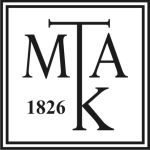The Practice of the Royal Court of Pécs after the “Third Jewish Law” Came into Force
DOI:
https://doi.org/10.15170/DIKE.2019.03.02.04Keywords:
disfranchisement, judicial practice, marriage law, Royal Court in PécsAbstract
In the series of anti-Jewish measures in Hungary, the “Third Jewish Law” (August 8, 1941) was the modification of the Act XXXI of 1894 on matrimonial law. The prohibition of intermarriage and the penalization of sexual intercourse between Jews and non-Jews in 1941 did not mean returning to the regulation of impediments to marriage in the confessional laws: the impediment of cultus disparitas was based on the religious affiliation of the parties, whereas the “Third Jewish Law” gave a racial definition to being Jewish. This study is the first part of publishing the results of the research in the records of the Royal Court of Pécs in private law matters in the years after the “Third Jewish Law” (1942–1945) came into force. The aim is to show the effects of the racial law in the social relations of Baranya County in South Hungary and the analyzation of the delivery of judgments when applying the disenfranchising “law”.
Published
Versions
- 2020-04-09 (1)
- 2020-02-01 ()










